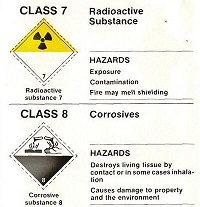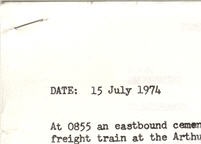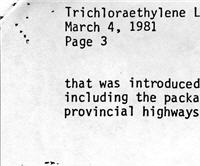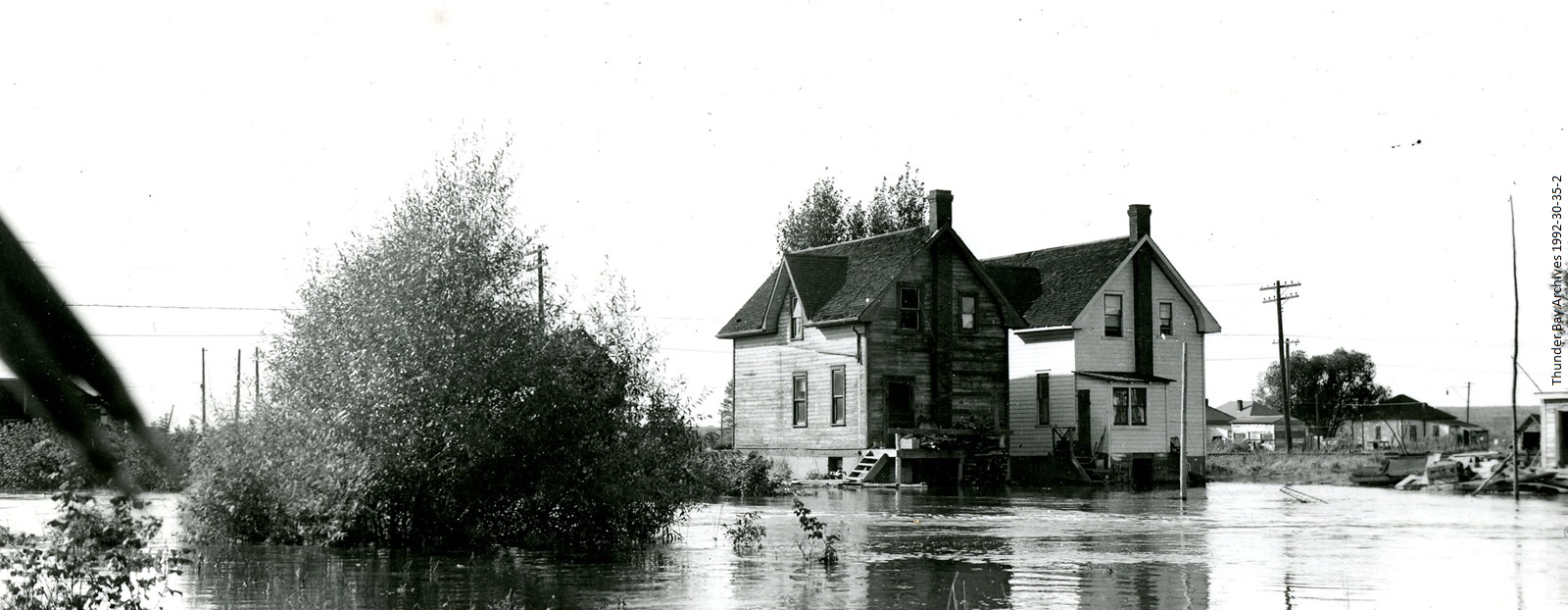With Thunder Bay a major transportation hub between the Eastern and Western provinces of Canada, large amounts of materials, including hazardous goods, were transported through both Port Arthur and Fort William.
Transportation Through The Lakehead
As the Western Wheat boom grew, so did the cities of Port Arthur and Fort William. Railways, such as the Canadian Pacific Railway and Canadian Northern Railway, not only helped to stimulate employment in the community that would become Thunder Bay, but also contributed to its significance as a transportation hub. Built on the coast of Lake Superior and with a variety of local natural resources such as lumber, Thunder Bay became an increasingly important transportation hub.
The photograph on the right, taken in the late 1950s, depicts a train by Saskatchewan Pool #8, formerly Ogilvie's Flour Mill. The heavy railway traffic through the Lakehead made transportation safety a particularly serious issue.
Hazardous Materials
As shipping by both rail and truck grew more common, so did awareness of the dangers inherent in transporting hazardous goods. Transportation companies also recognized this concern: the C.P.R. was one that took action by presenting their safety practices, training, and improvements to equipment to communities along the North Shore.
Still, the Thunder Bay Area Emergency Measures organization considered that a spill of hazardous materials would be undoubtedly the greatest threat posed to communities during peacetime. To cope with such a spill, should one ever occur, all emergency response personnel should receive training specific to such a potential disaster.

Chlorine leak, 1974
On July 15, 1974, a cement truck collided with a train at the intersection between Arthur Street and Waterloo Street. Two tank cars loaded with chlorine gas, as well as a box car, were knocked over. Chlorine was leaking from one of the cars. This accident was reported to the Fire Department almost immediately by witnesses, who commented on the "greenish-yellow vapour rising from one of the tank cars."

Trichloroethylene on the Highway, 1981
On March 4, 1981, a truck on Highway 11-17 just west of Thunder Bay was found to be leaking trichloroethylene, a common industrial solvent. This chemical, although not flammable, is toxic, and capable of causing death.
The Thunder Bay Fire Department was first on the scene. They contacted the E.M.O., which provided advice that they wear self-contained breathing apparatuses to protect themselves. The public needed to be protected and kept far away from the vehicle as well. Attempts were made to obtain drums to contain the leaking fuel, but no standardized guidelines for the containment of chemical spills had been set in place, and the drums arrived too late. The incident was turned over to an environmental company which had experience with such clean-up operations.
During the investigation, the E.M.O. made discoveries that demonstrated the "urgent requirement for regulations covering the transportation of Hazardous Goods by provincial highway." There had been no Hazardous Goods placard affixed to the trailer, and no padding between the drums which could have prevented leakage. It was fortunate that the vehicle had not been involved in a collision, as the results would have been much worse.

Regulation
In 1980, the Transportation of Dangerous Goods Act was passed by the Government of Canada. This Act regulated safety standards, handling, shipping and shipping documents, and containers. However, the Act did not come into full effect until 1985.
The effects of chemical spills from both railways and on the highways had been seen in the Thunder Bay area, and the risk of a catastrophic spill close to residential areas was apparent. The Act was endorsed by municipalities including the Municipality of Paipoonge and the City of Thunder Bay.
References: TBA 5176-10
Contact Us








